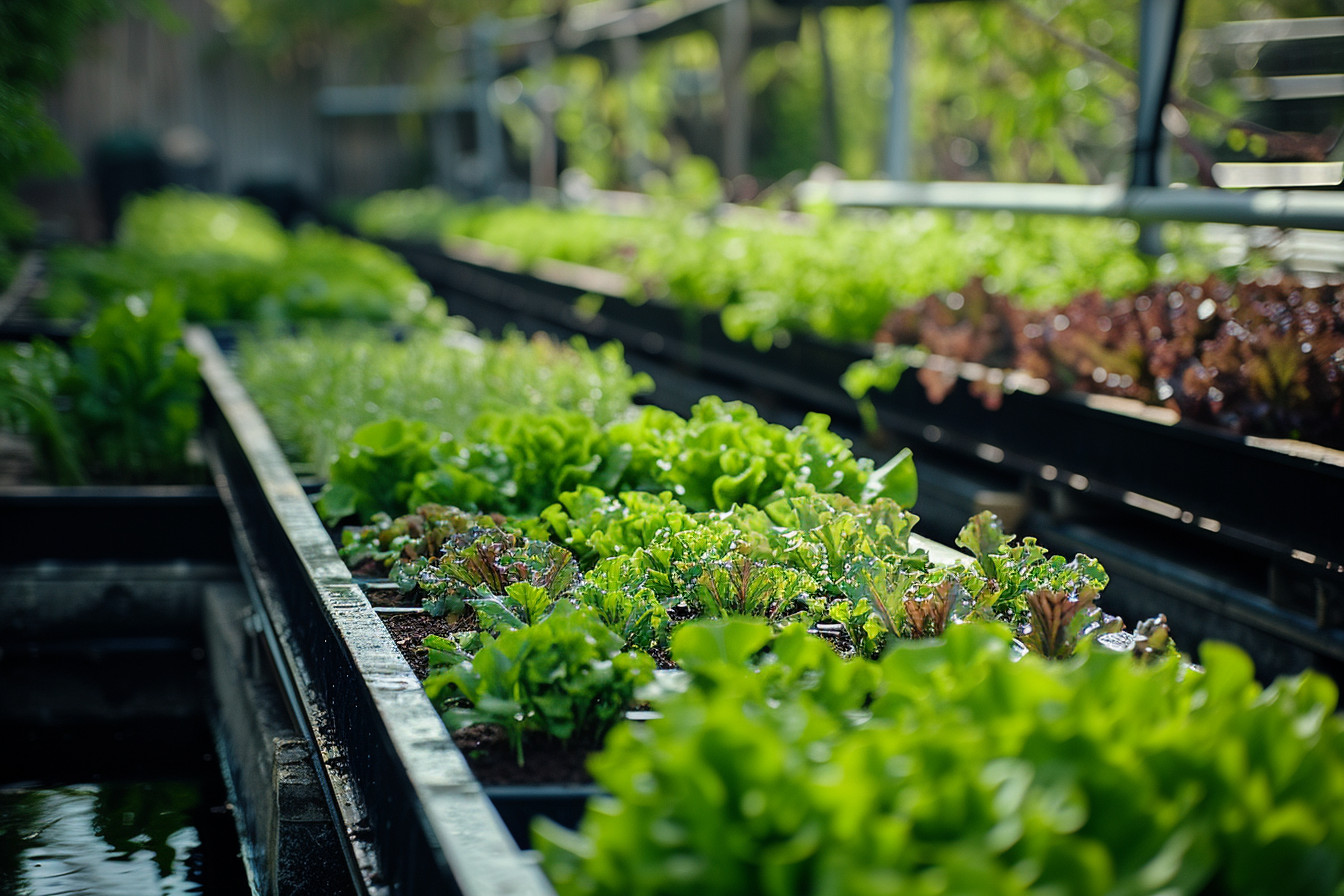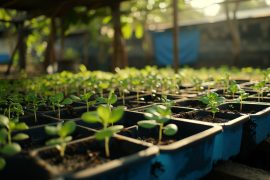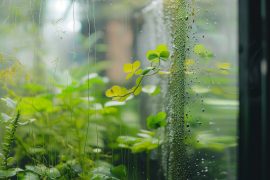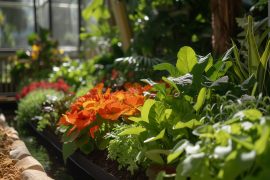I’ve always found a unique peace in the rhythm of gardening, the way it connects me to the gentle ebb and flow of nature. Aquaponic gardening, with its harmonious blend of aquaculture and hydroponics, takes this connection to a whole new level. It’s like a dance between fish and plants that not only soothes the soul but also yields a bounty of fresh produce.
In this guide, I’ll take you through the seasonal nuances of aquaponic gardening. Whether you’re a seasoned green thumb or just dipping your toes into the water, I’ll break down the technical jargon into bite-sized, easy-to-understand pieces. And trust me, there’s no need to be an expert to get started.
Spring: Preparing for a Successful Aquaponic Garden
As the remnants of winter melt away, spring announces itself with a gentle nudge, whispering promises of new growth. It’s the perfect time for me to roll up my sleeves and prep my aquaponic garden for the upcoming season. I find a deep sense of calm as I begin the process, surrounded by the soft hum of nature awakening. It’s not just about planting seeds; it’s about setting the stage for a symphony between aquatic life and vegetation.
First things first, it’s essential to inspect the system for any potential issues. After a long winter, I check for cracks or leaks in my tanks and grow beds. It’s much easier to fix these now than when they’re fully operating. I take a moment to clean out any debris that’s made its way into the system over the cooler months, ensuring that the water will flow unimpeded.
Following the cleanup, I test the water quality. Maintaining optimal levels of pH, ammonia, nitrites, and nitrates is critical for both the fish and the plants. Here’s a simple table I keep on hand to remember the ideal ranges for my aquaponic system:
| Water Quality Parameter | Ideal Range |
|---|---|
| pH | 6.8 to 7.0 |
| Ammonia | Less than 0.5 ppm |
| Nitrites | Less than 1 ppm |
| Nitrates | 5 to 150 ppm |
With the system in check, I turn my attention to the living components. Aquaponic gardening is about balance, so selecting the right fish and plants is key. In spring, I prefer to stock with hardy fish like tilapia or goldfish as they’re tolerant of the transitioning weather. Plus, they provide the essential nutrients my plants will need through their waste.
For plants, leafy greens and herbs are my go-tos. They grow quickly, which means I’ll get to harvest sooner. I make it a point to pace my planting, so I don’t overburden the system or the fish. I’ll introduce new plants slowly over several weeks, always monitoring how they affect the water quality.
Summer: Maximizing Growth and Health of Your Aquaponic Plants
When the warm summer sun blesses us with longer days and intense light, it’s a signal for me to shift my focus towards maximizing the growth of my aquaponic buddies. The height of summer can be tricky; it’s like balancing a seesaw, ensuring neither the fish nor the plants get the short end of the stick. Let me share some insights on keeping that balance just right.
During summer, it’s essential to safeguard the oxygen levels in the water because warmer water holds less oxygen, and our finned friends rely on this for survival. I always check the aeration systems regularly and consider adding extra air stones or a more powerful pump as the mercury rises. It’s not just about keeping the fish happy, though; well-oxygenated water helps the plants absorb nutrients more efficiently.
Speaking of nutrients, the lush growth period can deplete key minerals more rapidly than other times of the year. I’ve found it helpful to do weekly checks of nitrate, potassium, and iron levels. When I spot a deficiency, I supplement with organic hydroponic solutions that are safe for both fish and plants.
Here’s a pro tip for you: Use shade cloths to prevent algae growth and protect your plants from getting scorched by the midday sun. It’s like putting a parasol over your sensitive greens. Not only does this help manage the temperature, but it also provides a much-needed reprieve from the relentless sun.
Here are some essential summer tasks I always keep on top of:
- Monitor water temperature daily; keep it below 86°F (30°C) for optimal plant and fish health.
- Watch out for evaporation; you’ll likely need to top off the water more often due to the heat.
- Trim and harvest your plants regularly to promote growth and avoid overcrowding.
One thing I’ve learned from my years of tending to aquaponic gardens is the importance of plant selection. In the summer heat, opt for varieties that thrive in warm conditions. Think tomatoes, cucumbers, and peppers. These not only withstand the heat but relish it, becoming the superstars of the season.
Fall: Harvesting and Maintaining Your Aquaponic System
As the vibrant leaves of fall begin to drop, it’s a gentle reminder that my aquaponic garden requires special attention. The tranquility of harvesting the last yields meshes with preparations for the cooler season ahead. It’s that time when the air is crisp and the days grow shorter, fostering a natural moment to reflect on the cycle of growth and renewal that I’m part of.
Harvesting in the fall is one of the most rewarding parts of aquaponic gardening; it’s the culmination of months of careful tending. Cool-season crops like leafy greens and certain herbs now reach their peak, ready to be plucked from their aquatic abode. I make it a point to check daily for ripeness to ensure that I harvest at the peak of their flavor and nutritional value.
Besides reaping the benefits, there’s maintenance to be done. One key task is to test and adjust the water parameters as the temperature drops. Water that’s too cold will stress the fish and can disrupt the balance of the system, potentially affecting plant growth. To mitigate this, I use a water heater with a thermostat, maintaining a consistent temperature that keeps my fish comfortable and my plants thriving.
Maintaining oxygen levels is still important during this cooler season. Even as the water holds more oxygen, I find that the reduced daylight hours can decrease the photosynthetic activity, so an aerator continues to be as essential now as in summer.
Plant selection shifts too. I focus on species that are robust in the face of cooler temperatures. Here are some I’ve had great success with:
- Kale
- Swiss chard
- Pak choi
- Certain varieties of lettuce
Their resilience combined with rich, earthy tones adds a picturesque quality to the garden as it contrasts against the autumn sky.
With the harvesting underway, I also start preparing for potential early frosts. This might involve adding insulative covers to the system or making sure that piping is protected to prevent any freeze damage. I’ve learned from experience that taking these steps proactively makes a big difference once the real cold sets in.
Winter: Winterizing and Protecting Your Aquaponic Garden
Winter in the aquaponic world isn’t just a dormant period; it’s a season of preparation and protection. While I’ve always found a unique tranquility in the hushed atmosphere of a winter garden, the frosty air and stark branches remind me of the intricate dance between nature and nurture.
Insulating your system becomes paramount as temperatures plunge. I’ve often used thick foam as insulation, wrapping it around tanks and pipes to prevent freezing. It’s like tucking your garden into a warm bed, snug against the chill. I learned the hard way that a frozen pump can mean disaster, so I always make sure everything’s well-protected against the cold.
Adjusting feeding schedules is another critical change. Fish metabolism slows in colder water, so they need less feed. Give them too much, and the uneaten portions can rot, tipping the delicate balance of your system. It took me a trial season to find that sweet spot, and I recommend keeping a keen eye on your fish’s behavior—it’ll tell you what they need.
Here’s a simple yet effective tip: Monitor your water temperature daily. Setting up alerts for critical temperature thresholds has saved my skin more times than I can count. You’d think I’d enjoy the serenity of winter a bit more without these worries, but truth be told, there’s something deeply satisfying in staying vigilant.
I’ve also become a fan of adding a greenhouse layer or using a hoop house to retain warmth. The stillness of a greenhouse in winter, with the soft drip of water and the occasional ripple from the fish, brings a sense of peace that’s hard to describe. It’s a cocoon of life defying the starkness outside.
Then there’s the selection of cold-hardy plants. Over the years, I’ve been charmed by varieties that seem to flourish despite the dipping mercury. Kale, lettuce, and chard have become my reliable companions through frosty months. They’re tough little guys, and seeing their resilience can be pretty inspiring.
Maintaining an efficient biofilter is as vital in winter as any other season. Beneficial bacteria will slow down as the temperature drops, but they shouldn’t be neglected. I learned that maintaining a slightly warmer water temperature could help these microscopic workers thrive and keep your system healthy.
Final Thought: The Joy and Simplicity of Aquaponic Gardening
Aquaponic gardening can be a bit like a puzzle, where each season offers its own unique pieces. In winter, it’s all about keeping things cozy and running smoothly, despite the chill. I’ve found that a little extra care goes a long way in protecting my aquatic buddies and leafy greens from the cold. It’s pretty rewarding to see kale and lettuce thriving when it’s snowing outside! Plus, there’s something truly peaceful about tending to my garden, no matter the season. It’s a year-round adventure that’s as fulfilling as it is fun. Happy gardening, folks!







